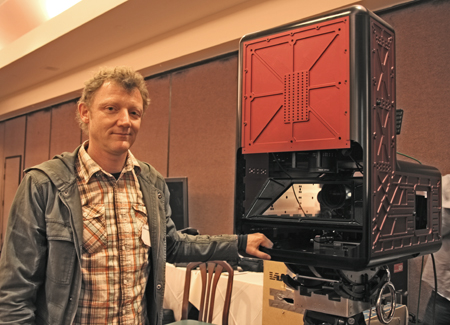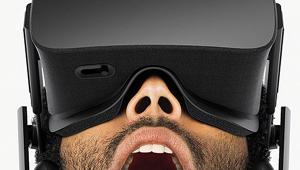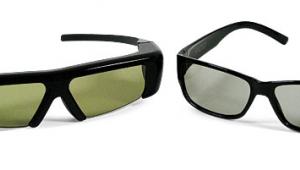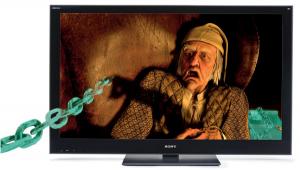"Wilson warned that if the introduction of 3D isn't undertaken very carefully, the entire market could collapse." Am I the only one who hopes 3D does fall flat on its ass? I mean Blu-ray has been the standard format for what, all of 2 years now and already companies want us buy new products to to play gimmicky 3D junk that can only be watched at half resolution for each eye? No thanks!
The Future of 3D for Cable and TV

Before the panel discussion, we heard from Lucas Wilson of Assimilate, a post-production consulting firm and software developer of professional 3D tools. Wilson argued that modern 3D is here to stay in commercial cinemas, but broadcast content could be another matter, primarily because of eye fatigue and consumer opposition to 3D glasses. He also reported that Assimilate conducted screening tests for some of Hollywood's "golden eyes" at the NAB (National Association of Broadcasters) convention last month with 3D content the company had compressed to a paltry bit rate of 6.5Mbps. The viewers criticized things like color, he said, but not compression artifacts.
Next up was the panel discussion, which included Eisuke Tsuyuzaki, CTO of Panasonic Corp. of North America; Derek Harrar, senior vice president and general manager of video and entertainment services for Comcast Cable; Steven Roberts, executive vice president of DirecTV; and Bob Wilson, vice president and general manager for networked video solutions at Motorola.
Harrar pointed out that Comcast has already broadcast five separate VOD (video on demand) programs in anaglyph (red/blue) 3D since 2008. Actually, these programs were available in standard def and high def as well as in 2D and 3D, and in each case, about 16 percent of viewers opted for 3D, which he saw as very high. By contrast, Roberts said that DirecTV has waited for the technology to reach a point that met with its high standards, which it finally has, leading the satellite provider to launch three 3D channels in June.
Even though there's a dearth of 3D content right now, Roberts said that DirecTV is not going to convert 2D material to 3D, a process that is not yet up to the provider's standards. Instead, it will work with its partners to produce 3D content from scratch. (Earlier, Lucas Wilson aptly likened 2D-to-3D conversion to colorization of black-and-white movies.)
Bob Wilson from Motorola pointed out that HDTV has been brewing for the last 10 years and only recently reached 50-percent market penetration—and a large fraction of those sets are not being used to show real HD!—so we can't expect 3D to be immediately embraced by the mass market. He also argued that the transition from 2D to 3D is more like the transition from silent films to talkies than it is like the move from SD to HD.
Tsuyuzaki presented some projections from the Consumer Electronics Association that indicate a steadily increasing adoption rate among consumers, with 1.1 million 3D TVs being shipped in 2010, 4.1 million in 2011, 8.8 million in 2012, and 12.25 million in 2013, reaching about 25-percent market penetration in just four years. That seems overly optimistic to me, especially compared with the transition from SD to HD, which faced none of the hurdles that 3D does, such as glasses and eye fatigue.
Wilson warned that if the introduction of 3D isn't undertaken very carefully, the entire market could collapse. Also, it isn't necessary for all content to be in 3D for the idea to gain traction, and all the panelists agreed that most initial 3D broadcasts will be "event" programming, such as major sporting events, awards shows, etc. No one expects people to watch the news in 3D any time soon.
For now, 3D broadcasts will exhibit half resolution for each eye in order to fit in the same bandwidth as 2D content, though Harrar and Roberts claimed that Comcast and DirecTV will effectively deliver more than that thanks to advanced compression algorithms. However, to deliver true 1080p to each eye requires twice the bandwidth, and Wilson speculated that it would be at least 18 to 24 months before such decoders would be available for home use.
Speaking of decoders, fellow journalist Michael Heiss attended the Cable Show earlier in the day and learned that certain Scientific Atlanta set-top boxes will be upgradeable to 3D capabilities in August, but not the widespread 8300. Samsung's STB will be upgradeable "at some point," and Motorola's DCX STBs can be upgraded now. However, it's up to the cable provider to decide when—or if—they will actually deploy the upgrades.

After the panel discussion, I had a chance to view the demos, including the Speedwedge 3D camera rig, shown here with inventor Leonard Coster and close up at the top of this blog entry. The Speedwedge holds two cameras, one pointing forward and the other pointing down. A half-reflective mirror splits the light entering the opening in the front, sending it to both cameras, which can be positioned relative to each other for an interocular (eye-to-eye) distance from 0 to 4 inches, something that can't be done if two cameras are placed side by side. The operator can also control the convergence point—the point at which the left and right images converge, defining the plane of the screen—as well as the focus, aperture, and zoom of both cameras.
Why would anyone need two cameras at an interocular distance of 0? This does not produce 3D images, but it does allow you to increase the dynamic range of the final picture by overexposing one camera while underexposing the other and compositing the two images together. This can typically add 4 to 6 stops to the overall dynamic range—a very clever side benefit to this ingenious device.
- Log in or register to post comments

Dave, you're certainly not the only one who hopes that 3D fails. However, I must point out that 3D Blu-ray presents full-res 1080p to each eye. Broadcast 3D provides half resolution for each eye at worst, and better than that if you believe the providers who say their codecs recover more resolution, though it won't be true 1080p per eye for at least a couple of years.

I agree Dave...3D will be a flop and will go the way oh HDDVD. It's "catchy" at first but people will not want to sit in their living rooms with glasses. The studios realize they need to make more money, so they gimmick our presentation. When will they learn, just the facts man, just the facts!

The one benefit of 3D as stated in a Scott's article from march is that the Panasonic VT25 produces a superb picture. Because of 3D it transcribes the information at the top and bottom of the screen whic leads to a better picture. Now a note to Panasonic. We don't need 100K hour television sets. 25k 0r 30k sets would give about a 15 year life span. We want the best picture not the longest lasting set. Make the damm adjustments and stop bleeding the black levels. AG
























































